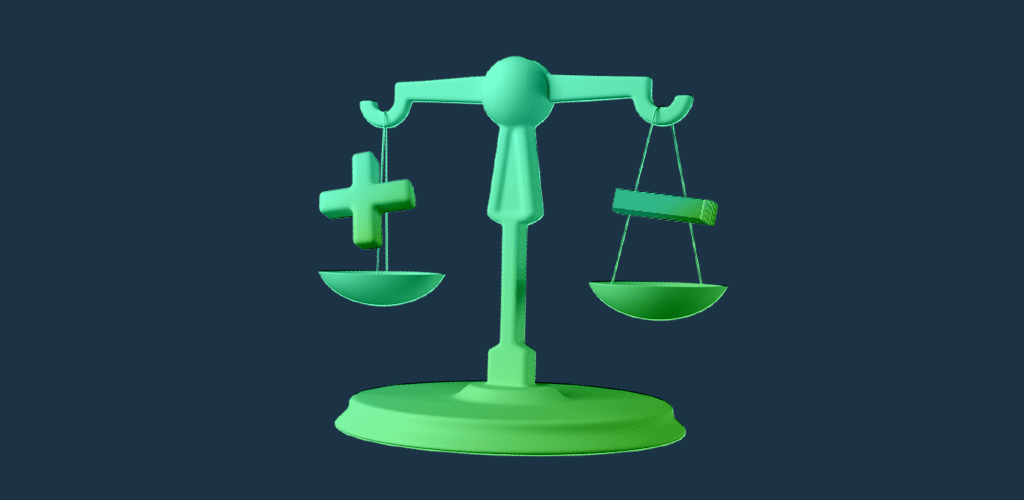Ready to move from investing to trading? Find out more about CFD trading, including what it is, some of its advantages and disadvantages, and how you can get started.
The world of investing has seen a massive transformation in the last decade or so, which has helped put more power in the hands of more investors.
With improving technology, including an increase in digital connectivity around the globe, those looking to enter global markets have been able to do so with just a few taps on their favourite device. These days, real-time market moves, updated news and analysis and the trades of Popular Investors are all at your fingertips.
Another piece of the investing puzzle that has fallen into place is contract for difference trading, commonly known as CFD trading. Although CFD trading has existed for nearly 20 years, an increase in digital trading capability has recently made this a potentially attractive option for more traders. While CFD trading has some similarities with traditional investing in stocks and other markets, it also comes with some key differences.
So, just what is CFD trading, and why can it be such a good option for investors? Read on to find out a little more in our CFD trading guide, featuring key advantages and disadvantages, how leverage can play a factor and where in the world you can get involved with this trading option.
What is CFD trading?
CFD trading involves entering into an agreement with a broker where one side pays the other based on an asset’s change in price.
When it comes to CFD trading vs. share trading, the main difference is CFD trading does not involve actually owning shares like in stock trading, digital coins or assets such as cryptoasset trading, or foreign currency like forex trading. The only thing you “own” is a contract for the agreement you have entered into with the broker.
Tip: You can research and invest in a range of markets on eToro, including stocks, commodities, crypto, forex and more.
How does trading CFDs work?
The way CFD trading generally works is that you choose an underlying asset and whether you will “buy” or “sell.” Depending on how the value of the asset changes between when you opened the trade or you choose to end the trade, you either pay the broker the negative difference, or the broker pays you the positive difference.
On eToro, going long is to “buy” an asset, while going short is to “sell” an asset. So, you would profit based on how far the value falls between the start and end date of your CFD agreement.
What are the advantages and disadvantages of CFD trading?

CFD trading has several key advantages over other forms of trading that have made it a popular option among some investors, but, as with all types of trading, there can also be some disadvantages to CFD trading too. Learn more about these advantages and disadvantages below.
Advantages
- Perhaps the most attractive thing about CFD trading for many investors is the ability to access leverage. We will talk about this more later, but leverage lets you take a stronger position without allocating capital to it upfront, therefore, providing increased trading flexibility.
- As mentioned earlier, CFD trading can make it easier to go long or go short, as opposed to other markets where you traditionally only buy shares or assets when you think they are going to rise in value.
- While CFD trading is slightly different to other forms of investing, you can still access a range of markets, including stocks, currency, crypto and commodities such as oil, gold and silver.
- It can be a great way to hedge your portfolio. If you have a strong position in technology stocks, and you think your portfolio’s value is going to take a hit because the industry is in for some rough times, you can go short and actually make some of that (hopefully temporary) loss back.
- You can access global exchanges. The Australian exchange operates on normal working hours, meaning it might not be open when you log off from work for the day. With CFD trading, you can still invest in international exchanges in Asia, Europe, South America and elsewhere.
Disadvantages
- Maybe the most important thing to remember when it comes to potential disadvantages with CFD trading is that there is the potential for bigger losses when accessing leverage, although these can be limited with stop loss orders and with the help of federal regulations. Again, more on those in a bit.
- They can be riskier than other investment types when the market moves against you. If you have accessed leverage to go long on an underlying asset and its value drops greatly, your broker can initiate a margin call, which requires you to pay off some of the loss immediately. If you cannot, you might have to give up the whole position at a loss before the end of the time frame you agreed upon.
- Unlike a share, a piece of crypto or foreign currency, with CFD trading you don’t really own anything other than a contract that serves as a prediction of how you think the underlying asset’s value will change.
- As with other methods of trading, there can be various fees associated with CFD trading that can really chip into any profits you might make.
Spread betting vs. CFDs vs. options: what are the differences and similarities?
CFDs, spread betting and options are among the most popular leveraged trading products, but what are the key differences and similarities between the three?
Spread betting and CFDs both allow investors to take a position or place a “bet” on future stock performance. For those choosing spread betting, the amount they invest is the maximum amount of money they can lose.
Spread bets also have fixed expiry dates that are decided when they are first made, whereas CFDs on shares, ETFs and indices do not have an expiry date. They remain active until the investor chooses to close the contract. In most jurisdictions around the world, including Australia, any profits made on CFDs are taxed, while those made from spread betting may not necessarily be subject to the same tax rules.
By choosing to open a CFD, you are agreeing to exchange the difference, whether positive or negative, between the opening price and the closing price. With option trading, you are buying or selling the right to trade an asset at a price that has been predetermined. CFD options traders are able to buy assets for a fixed price during a set period that may be less than its market value.
Tip: You can also learn about the differences between investing and trading to see which aspects of each fit your strategy and goals better.
Is CFD trading legal in Australia?

Yes, you can trade CFDs in Australia with the help of several brokers, although there are a few restrictions.
In late 2020, the Australian Securities and Investments Commission (ASIC) announced some changes to the way CFDs are regulated in Australia. These regulations were then put into place in late March 2021.
Similar to responsible lending obligations put on lenders after the 2009 Global Financial Crisis, these new CFD restrictions are meant to protect investors. The restrictions were first pitched in 2019 after a regulatory review found that a majority of people who traded CFDs lost money.
One of the main changes ASIC initiated was making new limits on how much leverage a broker can offer a trader. The new limits are:
| Type of asset | New maximum leverage ratio offer |
| Major currency pair | 30:1 |
| Minor currency pair, gold or major stock market index | 20:1 |
| Commodity (other than gold), minor stock market index | 10:1 |
| Shares and other assets | 5:1 |
| Cryptoassets | 2:1 |
Other changes include:
- Prohibiting CFD brokers in Australia from offering certain gifts and incentives to open a CFD account or deposit more money into an existing margin account
- A condition where, if the funds in your CFD account are less than 50% of the margin required to cover your open positions, one or more of your positions will be closed
- Limiting the total amount of loss you can accumulate across your positions
Can you leverage CFDs?
Now, going back to this question as promised. The short answer is yes, you can leverage CFDs. In fact, this is one of the features that makes this method of investing so popular among investors.
It also means you don’t have to tie up as much of your investing capital, giving you more flexibility to pursue other trading opportunities while still maximising your options in the CFD market.
For example, if you want to buy 1,000 shares of Company A that cost $8.00 a share, a normal stock investment would cost you $8,000 (not including any fees involved in the transaction). However, if you want a margin of 10%, with a CFD broker offering to cover the 90%, you would only have to pay $800 for a CFD covering the 1,000 Company A shares. That means you have acquired 10x leverage.
Tip: Learn more about how leverage and margin can impact your trading and potentially give you the power to add more assets to your portfolio.
On the flip side, that power to take larger positions can also come with great loss when things do not go your way. While previously you could actually lose more than your initial outlay, new ASIC regulations mean you can’t lose more than your initial investment, regardless of leverage.
Accordingly, eToro’s safeguards operate to prevent major losses and will close a position once it passes this threshold of initial investment.
Where can you trade CFDs?

In addition to Australia, there are plenty of other major markets around the world, especially in Europe, in which you can trade CFDs. Countries where CFD trading is legal include:
- Denmark
- Estonia
- Germany
- Italy
- Japan
- Latvia
- Lithuania
- New Zealand
- Russia
- South Africa
- Sweden
- Switzerland
- United Kingdom
However, one major market that does not allow CFD trading is the USA because it is prohibited by the country’s Securities and Exchange Commission (SEC). CFD trading is also not permitted in Brazil.
How can you manage risk when trading CFDs?
If you are trading CFDs for the first time or are simply wanting to try and reduce some of the risk involved in trading CFDs, the following risk management tips may help:
Choose a reliable broker. It’s important to select a reputable CFD broker. Look for brokers who are licensed and regulated by a respected financial services jurisdiction, such as ASIC. Trading with a regulated CFD broker ensures that the strict operating standards of the licensing body are upheld.
Develop CFD trading strategies. Before committing to an investment, it’s a good idea to create several CFD trading strategies. You may choose to develop these strategies based on fundamental analysis, taking into account the latest news on the assets you are interested in investing in, or technical analysis, which uses charts and other trading tools to help discover trends.
Use a virtual trading account to test your CFD trading strategies. Whatever your CFD strategy may be, creating a demo trading account with your chosen broker can be helpful for understanding whether your strategy will work and the kind of results you may get. eToro offers free virtual trading accounts, allowing you to try trading CFDs in a risk-free setting.
Minimise your use of leverage. Although leverage can be both positive and negative, when it comes to CFD trading, it is important to remember that leverage can magnify losses just as quickly as profits. If you are just starting to trade in CFDs, consider minimising your use of leverage. This may help to reduce the impact of any potential losses.
Use trailing stops to preserve your capital. To reduce risk and help protect your capital, think about using trailing stops. They’re designed to preserve any profits you may make by ensuring that the trade stays open for as long as the price continues in the right direction. Once the price starts moving in the opposite direction, the trailing stop closes the trade.
Limit your exposure on each position. As there is the potential to lose more money than you initially invested in CFDs, it’s important to try and limit your overall liability on each individual trading position. Consider committing no more than 1-2% of your trading bank to each CFD trade.
Trading CFDs with eToro
Through eToro, you can trade a variety of CFDs online. From forex and commodities to indices, stocks and cryptoassets, there are many different types to choose from. eToro is a fully regulated broker with ASIC and several other regulatory bodies around the world. CFD trading is available to those residing in Australia and many other nations through the eToro trading platform.
CFD trading can be an interesting, different way to invest that offers some alternatives to traditional trading. But, as with any sort of investing, it comes with its own share of advantages and disadvantages.
Sound like something you might be interested in? Our multi-regulated eToro trading platform gives you a chance to learn how to trade CFDs risk-free with a $100,000 demo account. You can also follow Popular Investors and copy their trades with our CopyTrader feature, so you never miss a move.
FAQs
Can I access the legally maximum amount of leverage on eToro?
Are CFDs the same as futures?
What are some of the fees associated with CFDs?
Join eToro and upgrade your portfolio with CFD trading.
eToro AUS Capital Ltd ACN 612 791 803 AFSL 491139. OTC Derivatives are speculative and leveraged. Not suitable for all investors. Capital at risk. See PDS and TMD
This information is for educational purposes only and should not be taken as investment advice, personal recommendation, or an offer of, or solicitation to, buy or sell any financial instruments.
This material has been prepared without regard to any particular investment objectives or financial situation and has not been prepared in accordance with the legal and regulatory requirements to promote independent research. Not all of the financial instruments and services referred to are offered by eToro and any references to past performance of a financial instrument, index, or a packaged investment product are not, and should not be taken as, a reliable indicator of future results.
eToro makes no representation and assumes no liability as to the accuracy or completeness of the content of this guide. Make sure you understand the risks involved in trading before committing any capital. Never risk more than you are prepared to lose.
